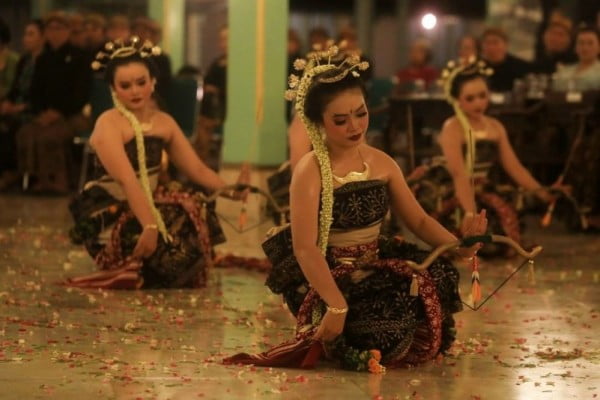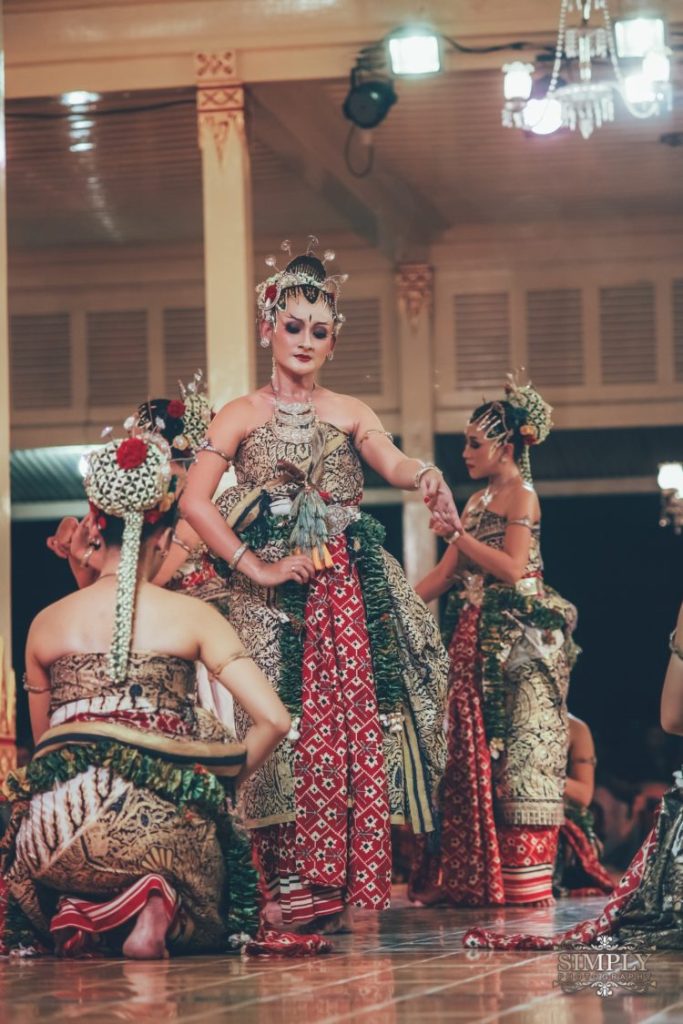Uncategorized
Bedhaya Ketawang: Unveiling the Symbolism and Sacred Tradition of Javanese Court Dance
Bedhaya Ketawang, a classical dance originating from Surakarta, Central Java, symbolizes the king’s supremacy. Bedhaya Ketawang can’t be performed arbitrarily and can only be performed in front of the king during the Jumenengan Ceremony to commemorate the king’s coronation. Bedhaya Ketawang can only be performed in the Pendhapa Ageng Sasonosewaka. The performance of Bedhaya Ketawang not only serves as entertainment but also contains moral and spiritual messages. This dance arises from the legend of the Mataram Sultanate about the love story of the Queen of the South Sea, known as Nyi Roro Kidul, with the founder of the Mataram Sultanate, Panembahan Senopati.
According to Javanese legend, Bedhaya Ketawang was created by Nyi Roro Kidul. There have been no changes in its choreography to honor the Queen of the South Sea. Nyi Roro Kidul promised to help protect the Mataram Sultanate on the condition that the king was willing to marry her. Allegedly, every king of the Mataram Sultanate was the husband of Nyi Roro Kidul. Until now, this dance is still preserved and performed in the Jumenengan Ceremony to ensure the continuity of the king’s power. The relationship between Bedhaya Ketawang and the Queen of the South Sea makes this dance very sacred and imbued with strong magical elements.

Bedhaya Ketawang is performed by a group of nine female dancers who must be virgins and not menstruating during the performance. Each dancer is given a name and represents a human body organ: batak symbolizes the head, endhel ajeg symbolizes the heart, gulu symbolizes the neck, dhadha symbolizes the chest, apit ngarep symbolizes the right arm, apit mburi symbolizes the left arm, endhel weton symbolizes the right leg, apit meneng symbolizes the left leg, and buncit represents the sexual organ. The nine dancers also symbolize the cardinal directions with the center point as its core. The symbolism of the love story between the king and Nyi Roro Kidul is evident in the Batak and Endhel Weton dancers.
Rehearsals for Bedhaya Ketawang dance can only be held on Tuesday Kliwon, which is considered one of the propitious days in the 35-day cycle of the Javanese calendar, therefore it can only be done once a month. Before the performance, the dancers will enter a three-day and three-night quarantine in a specific room in the palace while offering prayers. During the performance, offerings will be provided to ensure the running of the event. These offerings include rice, vegetables, and fruits. The offerings are placed in sacred places, including the stage. The various offerings used in the Bedhaya Ketawang performance include the pepak ageng offering, the pepak alit offering, the bekakak offering, and the incense burning offering. The burning incense also helps create a magical aura.

In the Bedhaya Ketawang dance, the makeup used is the paesan makeup, similar to the makeup worn by brides in Surakarta-style weddings. The costume design of the dancers follows the design of the dodot ageng, which is similar to what is worn by brides. The motif used on the dancers’ costumes is the “Alas-alasan” motif, which symbolizes the forest and all living creatures. This motif also refers to the role of the king who has responsibility to preserve the forest and the environment to ensure the survival of humans and other living beings.
Reference:
Maryono., Widawati, S., Yuliarmaheni, I., MD, Slamet., Wahyudiarto, D., & Midiyanto. 2022. The relevance of Bedhaya Ketawang values in today’s society. Jurnal Seni Budaya, 20(2), 109-120. DOI: 10.33153/glr.v20i2.4576


